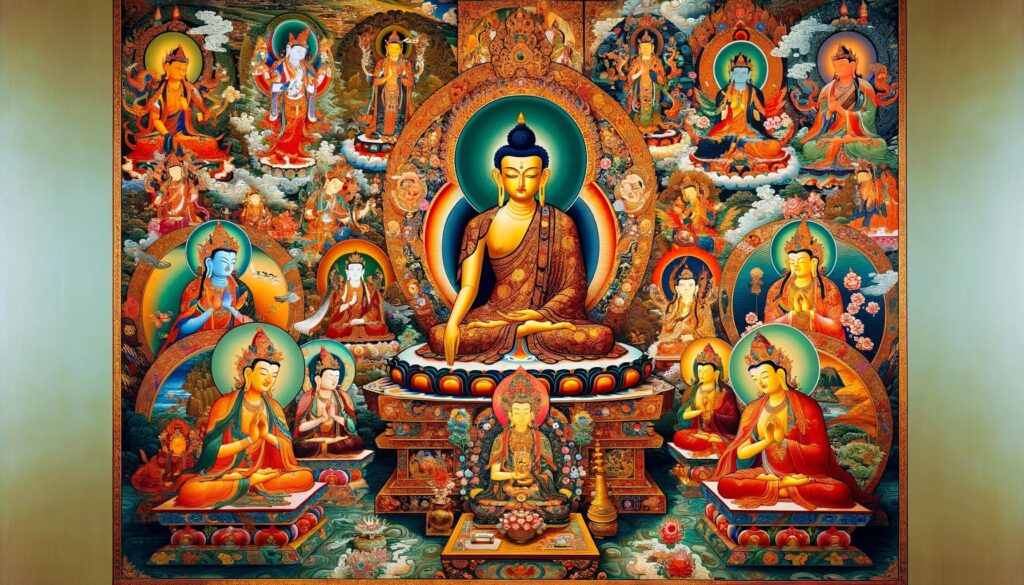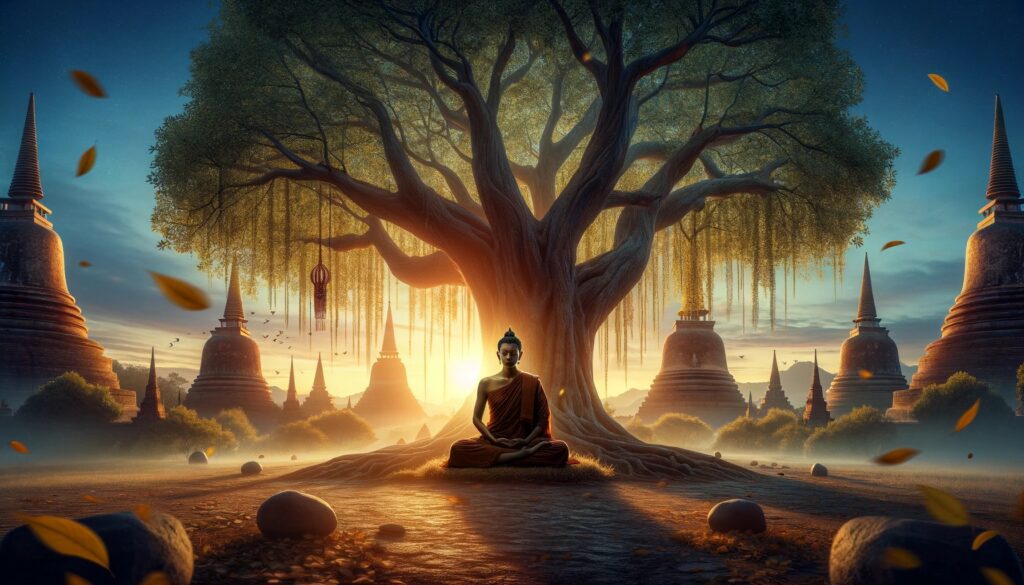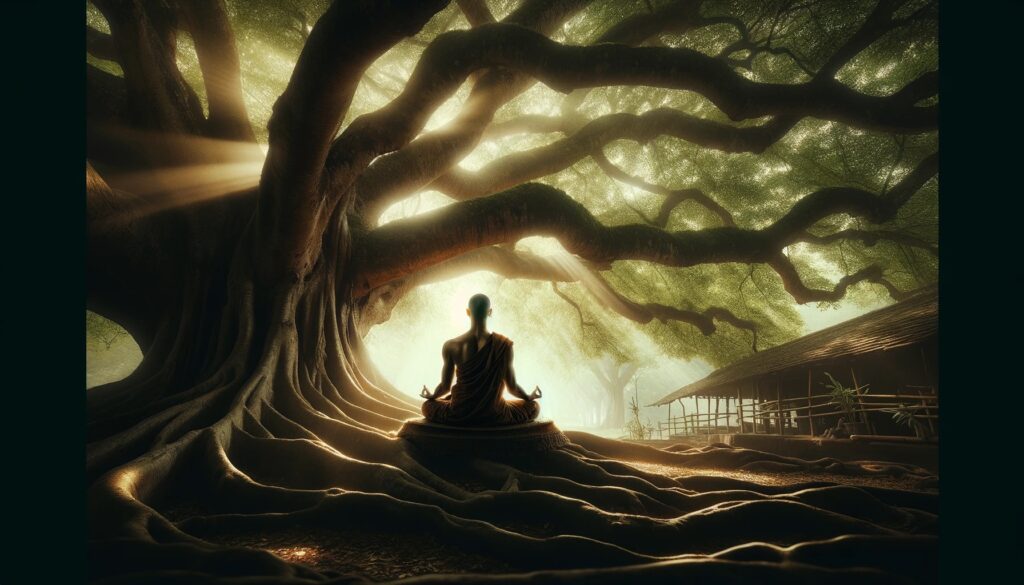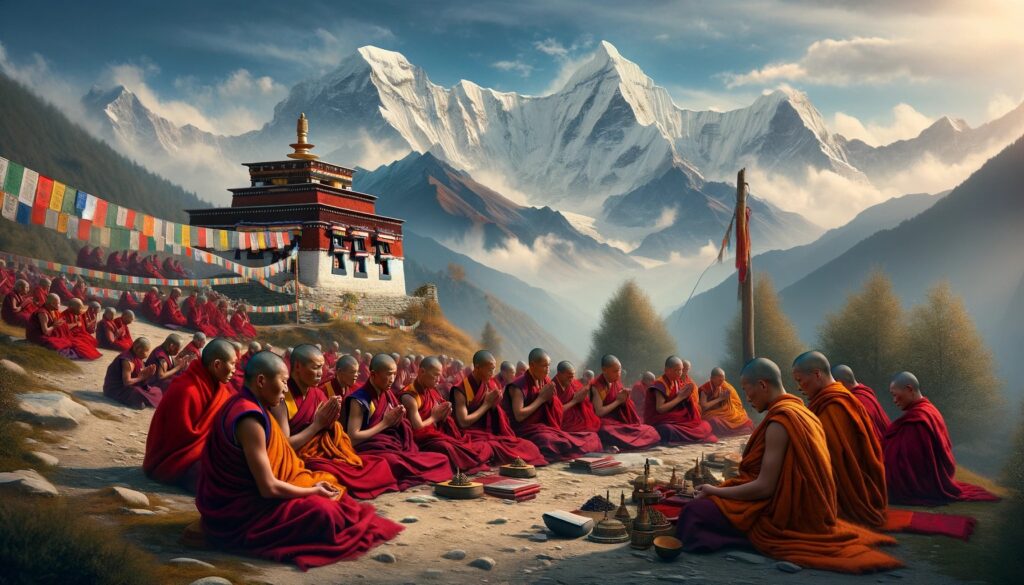The Path to Peace and Wisdom: Exploring Buddhism’s Teachings and Practices

It all began with a prince named Siddhartha Gautama, who, after encountering the harsh realities of human suffering, decided to seek enlightenment. This journey led him to become the Buddha, the Awakened One, whose teachings have shaped the spiritual lives of countless individuals for over 2,500 years.
Buddhism is more than just a religion—it’s a philosophy, a way of life, and a profound spiritual tradition that has touched millions around the world. Rooted in the teachings of Siddhartha Gautama, the Buddha, it offers practical tools for achieving peace, balance, and enlightenment in a chaotic world. Whether you’re new to Buddhism or seeking to deepen your understanding, this guide will walk you through its key teachings, practices, and the transformative power of its wisdom.
What Is Buddhism?
At its core, Buddhism is about understanding the nature of existence and finding liberation from suffering. Founded over 2,500 years ago by Siddhartha Gautama, later known as the Buddha, Buddhism encourages self-awareness and inner growth. Unlike many religions, it does not revolve around worshiping a deity but rather emphasizes personal responsibility and spiritual development.
The origin of buddhism and History

Buddhism originated in India around the 5th to 6th century BCE. It was founded by Siddhartha Gautama, who later became known as the Buddha, or “The Enlightened One.” Siddhartha was a prince who renounced his luxurious life to seek the truth about suffering and existence. After years of meditation, he attained enlightenment under the Bodhi tree in Bodh Gaya, India.
Born in what is now Nepal around the 5th century BCE, Siddhartha’s life took a transformative turn after witnessing old age, sickness, death, and an ascetic. His enlightenment under the Bodhi tree was just the beginning. Buddhism spread like wildfire from India to Southeast Asia, China, Japan, and beyond, adapting to various cultures while maintaining its core essence.
Core Buddhism Beliefs
The Four Noble Truths
The foundation of Buddhism lies in these four truths:
- Life involves suffering (Dukkha). (life is suffering (dukkha))
- Suffering is caused by attachment (Tanha). (suffering stems from desire)
- There is a way to end suffering. (there’s a way out of this suffering)
- The Eightfold Path leads to the end of suffering. (and that way is the Eightfold Path)
This path isn’t just a set of rules but a guide to living a life of wisdom, ethical conduct, and mental discipline.
The Eightfold Path
This path serves as a guide to ethical living and mental discipline:
- Right View
- Right Intention
- Right Speech
- Right Action
- Right Livelihood
- Right Effort
- Right Mindfulness
- Right Concentration
The Concept of Nirvana
Often misunderstood as a place, nirvana is more about a state of mind – the ultimate peace where the fires of greed, hatred, and delusion are extinguished. Imagine a life where you’re not bound by these chains; that’s nirvana in Buddhist terms.
Buddhist Scriptures and Texts
Tipitaka – The Holy Book of Buddhism
The Tipitaka, or Pali Canon, is often referred to as the holy scripture of Theravada Buddhism. It’s divided into three “baskets” – Vinaya (monastic discipline), Sutta (discourses by the Buddha), and Abhidhamma (philosophical analysis). But let’s not forget the Dhammapada, a collection of sayings from the Buddha, offering practical wisdom for everyday living.
Other Influential Texts
The Diamond Sutra pdf, with its profound teachings on emptiness, and the Medicine Buddha Sutra, which focuses on healing and compassion, are just some of the texts that have guided Buddhist practice for centuries.
Buddhist daily reading and Practices in Daily Life
Buddhist Daily Practices
Buddhism major beliefs and practices often include meditation, chanting, and reading sacred texts. These habits cultivate mindfulness and compassion, forming the backbone of a Buddhist’s life.
Buddhist Meditation Techniques
Vipassanā (Insight Meditation)
This practice involves observing thoughts and sensations without judgment, leading to profound self-awareness.
Loving-Kindness Meditation (Metta)

Focuses on cultivating love and goodwill, starting with oneself and extending to all beings.
Zen Meditation for Beginners
Zen meditation, or Zazen, emphasizes posture and breathing to achieve stillness and clarity.
Buddhist Practices for Daily Life
The Role of Meditation
Meditation is the cornerstone of Buddhist practice. It helps quiet the mind, deepen self-awareness, and cultivate inner peace.
Mindfulness in Everyday Life
Mindfulness isn’t just about sitting still—it’s about being fully present in each moment, whether you’re cooking, walking, or even breathing.
Compassion as a Way of Life
Buddhism teaches that compassion is key to overcoming suffering, both for oneself and others.
Buddhist Holy Books and Texts – Daily Buddhist Readings and Reflections
Many Buddhists start their day with readings from texts like the Dhammapada, reflecting on verses to set a positive tone for the day. It’s like having your spiritual coffee, minus the caffeine!
The Tipitaka
Known as the “Three Baskets,” the Tipitaka is a collection of scriptures covering the Buddha’s teachings, rules for monks, and philosophical discussions.
The Diamond Sutra

This ancient text emphasizes the impermanence of life and the importance of compassion and wisdom. It’s a must-read for those delving into Buddhism.
The Dhammapada: A Sacred Text
The Dhammapada is a revered collection of the Buddha’s teachings, offering guidance on how to live a virtuous life. It’s written in simple, poetic verses that are easy to understand and practice in daily life.
The Role of Women in Buddhism
Historically, women have had a significant role, with figures like Mahapajapati Gotami, the first nun ordained by the Buddha. Today, women’s role in buddhism varies across different Buddhist traditions but is increasingly recognized as vital.
Women’s role in buddhism have historically played significant roles in Buddhism. While some traditions have limited their participation, modern movements are embracing greater inclusivity, highlighting figures like nuns and laywomen practitioners.
Understanding Karma in Buddhism
Karma theory s the idea that every action has consequences. Good actions lead to positive outcomes, while harmful actions result in suffering. It’s not about punishment but about understanding cause and effect.
Cultural and Philosophical Aspects
The Buddhist monk clothing Clothing and Monastic Life
Monks and nuns live lives of simplicity, with their robes symbolizing detachment from worldly possessions. Monks robes aren’t just clothes; they’re a statement of one’s commitment to spiritual practice.
The Role of Buddhist Monks

Monks dedicate their lives to spiritual growth, following strict rules and meditating for hours daily. They serve as teachers and role models for lay practitioners.
Monks Robes and Clothing
Buddhist monks wear simple robes, often in saffron or maroon, symbolizing humility and detachment from materialism.
Buddhist Philosophy
Is buddhism religion or a philosophy? Well, it’s both! It offers a way of life, ethical conduct, and a philosophical understanding of existence, all aimed at ending suffering.
Buddhism and Its View on Life
Buddhism teaches that life is ever-changing and interconnected. By embracing impermanence, practitioners learn to let go of attachments, leading to peace and happiness.
Buddhism Statue, Symbols and Artifacts
Common symbols include the lotus flower (purity), the wheel of Dharma (teaching), and statues of the Buddha in various poses, representing different teachings and qualities.
From the serene Buddha statues to the sacred Bodhi tree, these symbols carry deep meanings, often reminding one of the path to enlightenment or the Buddha’s teachings.
Buddhism in Modern Times
Contemporary Practices
Buddhism’s approach to sexuality is non-judgmental. It emphasizes responsible and compassionate behavior, aligning actions with the principles of respect and mindfulness.
How does Buddhism tackle modern issues like sexuality or technology? It’s all about applying timeless wisdom to today’s challenges, advocating for mindfulness and compassion in all aspects of life.
Global Spread and Adaptation
As Buddhism travels west, it adapts, blending with local cultures while maintaining its essence. We see this in practices like mindfulness meditation becoming mainstream in the West.
Myths and Misconceptions
One major myth is that Buddhists worship Buddha like a god. Nope! The Buddha is revered as a teacher, not a deity. Buddhism doesn’t deny gods but focuses on human potential for enlightenment.
Common Myths About Buddhism
- Myth: Buddhists worship the Buddha.
Truth: The Buddha is revered as a teacher, not a god. - Myth: All Buddhists are vegetarians.
Truth: While many choose vegetarianism, it’s not mandatory. - Myth: Buddhism is only for monks.
Truth: Anyone can practice Buddhism, regardless of their lifestyle.
Contents
FAQs about buddhism beliefs
What is the main belief of Buddhism?
The main belief is that suffering comes from cravings and desires, but you can overcome this through understanding the Four Noble Truths and following the Eightfold Path.
What is the concept of Buddhism?
It’s about achieving enlightenment or Nirvana by living ethically, meditating, and understanding reality’s true nature.
Can Buddhists believe in God?
Buddhism doesn’t require belief in a creator god but acknowledges various deities in its cosmology. It’s more about personal enlightenment.
Do Buddhists believe in God?
Traditional Buddhism focuses on self-reliance rather than divine intervention, though some sects incorporate deity worship.
Is there a God in Buddhism?
Buddhism isn’t centered around worshiping a god; it’s more about the path to enlightenment led by Buddha’s teachings.
What is the holy book of Buddhism?
The Tipitaka, also known as the Pali Canon, is considered the most comprehensive collection of Buddhist texts.
What is the Buddhism holy book called?
It’s called the Tipitaka or Tripitaka.
Is Buddhism a religion or philosophy?
It’s often seen as both, providing a philosophical approach to life while also encompassing religious practices.
How many followers does Buddhism have?
Approximately 520 million followers worldwide, making it one of the major religions.
Who do Buddhists pray to?
Buddhists might venerate Buddha or Bodhisattvas, not as gods but as examples of enlightenment to aspire towards.
What is the oldest religion in the world?
Hinduism is generally considered the oldest, with roots tracing back over 4,000 years, while Buddhism emerged around 2,500 years ago.
When was Buddhism founded?
Buddhism was founded around the 5th century BCE.
What is Nirvana in Buddhism?
Nirvana is the ultimate state of liberation, free from suffering and the cycle of rebirth.
What is the Buddhist calendar?
The Buddhist calendar is a lunar calendar used to mark important religious events.
What are the main practices of Buddhism?
Meditation, mindfulness, ethical living, and studying the Dharma are key practices.
What is the difference between Buddhism and Hinduism?
Buddhism focuses on the individual path to enlightenment, while Hinduism emphasizes devotion to deities.
Can anyone practice Buddhism?
Absolutely! Buddhism is open to people of all backgrounds and beliefs.
How do Buddhists view suffering?
Suffering is seen as a natural part of life that can be overcome through mindfulness and understanding.
What is the Buddhist approach to death and afterlife?
Buddhists believe in reincarnation and strive to break free from the cycle of birth and death through enlightenment.
Is Buddhism compatible with modern life?
Yes! Its teachings on mindfulness and compassion are more relevant than ever in today’s fast-paced world.
Buddhism offers a path to self-discovery and inner peace. Its timeless teachings continue to inspire millions around the world. Whether you’re looking for guidance on meditation or exploring its core principles, Buddhism has something for everyone.
Remember, Buddhism is like a big, friendly guide to living well. Whether you’re just curious or looking for a path to peace, there’s always something to learn and love about it. Keep exploring, keep questioning, and keep smiling!
Buddhism is a rich tradition that emphasizes mindfulness, compassion, and wisdom. With teachings like the Four Noble Truths and practices like meditation, it’s a journey toward enlightenment. Dive deeper, explore its sacred texts, and discover a way of life that resonates with modern seekers. Ready to begin?
Sources that offer deeper dives into the topics discussed:



